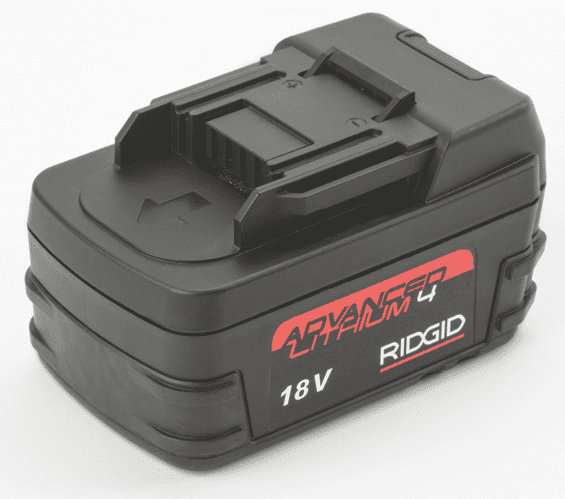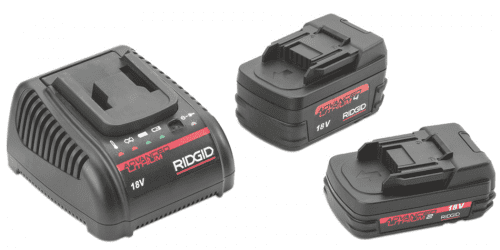Ridgid released its new 4.0 Ah and 2.0 Ah Advanced Lithium 18V batteries to much fanfare. These new 2.0 Ah and 4.0 Ah batteries remain backward-compatible with the current 18V slide packs. Not to be confused with orange Ridgid power tools, these packs go with the red plumbing (Emerson) side of the Ridgid brand.
The newly updated batteries utilize the new higher energy density cells and provide short-circuit protection, over-current protection, over-discharge protection, and cell balancing. These batteries are also designed to handle hotter temperatures. In fact, they can operate at sub-freezing temperatures of 29° F (-20° C) all the way up to 158° F (70°C). When you go above or below these ranges, the batteries’ thermal protection shuts the pack down. And, as you’d expect, over-discharge protection is also present to keep the batteries from discharging past the point of usability (which would damage the packs).
The 2.0 Ah battery comes standard with all Ridgid battery-powered Press Tools. When so equipped, it delivers over 200 presses per charge. The 4.0 Ah batteries give you over 400 presses. Since I doubt anyone is going to do that many before their lunch break, I’d say go with the lower weight! Both batteries have an expected lifespan of 400-500 charges.
“By offering the latest battery technologies in our next platform of 18V lithium-ion batteries, we are able to maximize tool uptime while simultaneously reducing battery size and weight.” – Christopher Burton, Global Marketing Manager for Ridgid
The new batteries are backward-compatible with existing 18V slide packs. The charge time has also decreased and is now over 50% faster, charging the 2.0 Ah batteries in 30 minutes and the 4.0 Ah battery in 45 minutes. Will we see these new batteries in Ridgid’s power tool lineup soon? Absolutely, just in a different form factor. As we’ve seen in our testing, using a 4.0 Ah pack results in an almost ridiculous boost in run-time and torque potential over a smaller single-layer battery.
We can’t wait.





